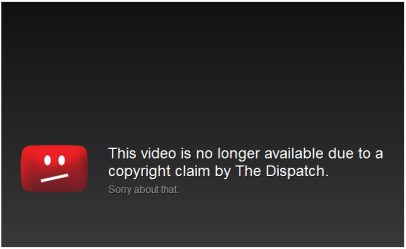When the Columbus Dispatch took a stand to defend its copyright of the video of a panhandler hosted on YouTube, it provided an important reflection of the state of the newspaper industry and a reminder about the impossible business of content scarcity on the Internet.
On January 6th, the Dispatch filed a claim with YouTube to remove the viral video of Ted Williams, the homeless man with the “Golden Voice.” It alleged that an “unauthorized person” had posted the video on the popular video site, in violation of its copyright.
The paper was obviously well within its rights to defend its content. The Ted Williams video exists on the paper’s website, but let’s face it — it wasn’t going to get the viral effect that made Ted Williams a household name among 13 million users on YouTube.
The point is, Williams would not have been a story if it weren’t for YouTube. The homeless man wouldn’t have had the attention of any of the companies that have since offered him jobs.
So why did the Dispatch act in such a matter?
Sadly, the Dispatch was trying to do what most newspapers are doing in the age of the Internet: restricting access to original content. Does it work? No. Content scarcity is not a viable business model when it comes to Internet publishing. At best, it allows rivals to circumvent you by curating other commoditized content instead of yours. In its worst, it robs journalism of a great story.
The Ted Williams story is indeed a triumph of online journalism through social media. Every great story deserves to be read, watched or heard. Scarcity doesn’t exist in great online journalism.
So what could Dispatch have done?
In the end, the Dispatch — under pressure from its readers (and ironically, other people who have never heard of the newspaper) — opened its own official channel on YouTube. Here’s the Williams video, now under the appropriate copyright (sans the 13 million views and the thousands of comments that have now been lost). I hope the lesson hasn’t been lost on other newspapers.
Filed under: Newspapers, Columbus Dispatch, content scarcity, online journalism, Ted Williams, YouTube

